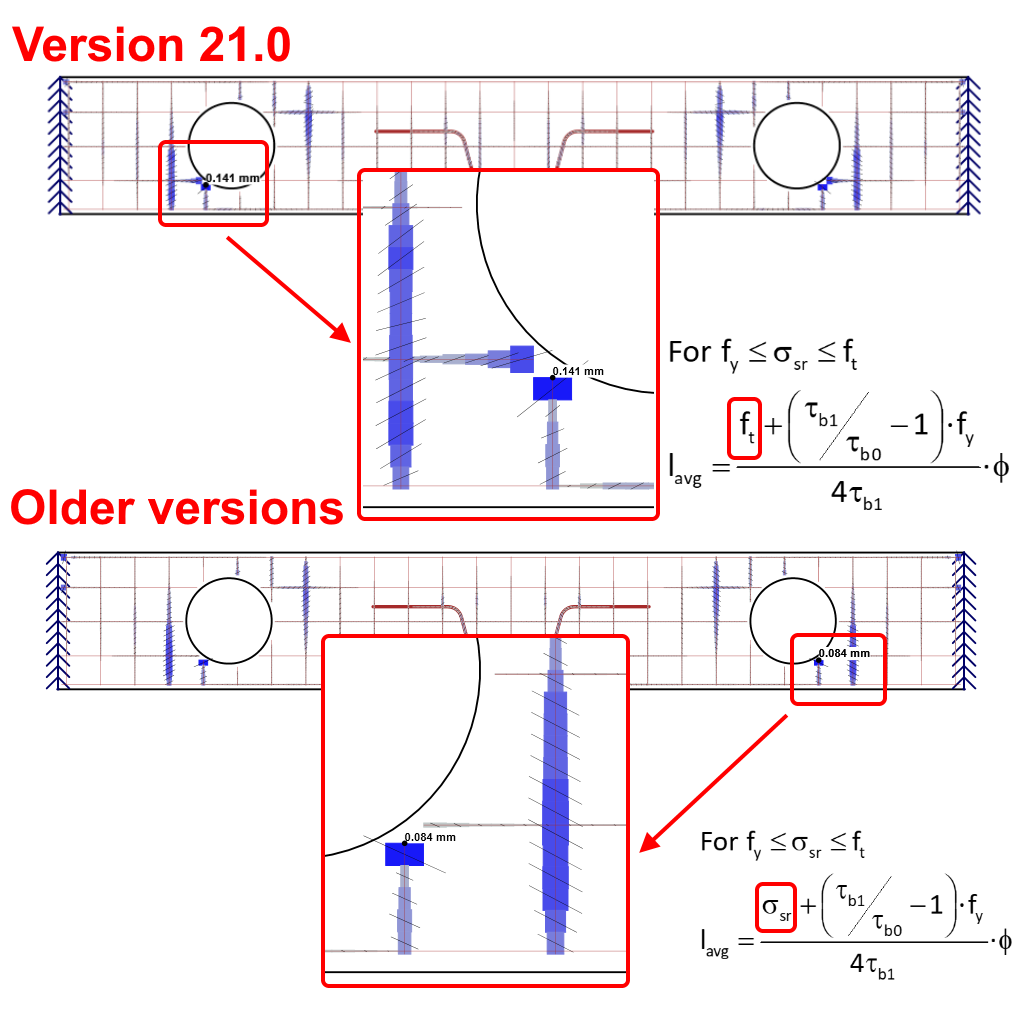The advanced CSFM theory considers two types of cracking, stabilized and non-stabilized.
Non-stabilized cracks can occur in regions with reinforcement ratios lower than the critical ratio, which is the minimum reinforcement amount for which the reinforcement is able to carry the cracking without yielding.
Typically stirrups or frame corners are the regions where the non-stabilized cracking is considered. A single crack occurs, and the tension stiffening effect is captured by the so-called Pull-Out-Model (POM).
According to the latest research done by ETH Zurich, we improved the theory of the Pull-Out-Model, precisely the average length where the crack can occur or is expected.
In the older version of IDEA StatiCa Detail, the average length depended on the rebar's actual stress state. Now, the average length is considered constant with respect to ETH research. That is why the resultant crack width might differ in version 21.0 comparing to version 20.1.
Available in Enhanced edition.


